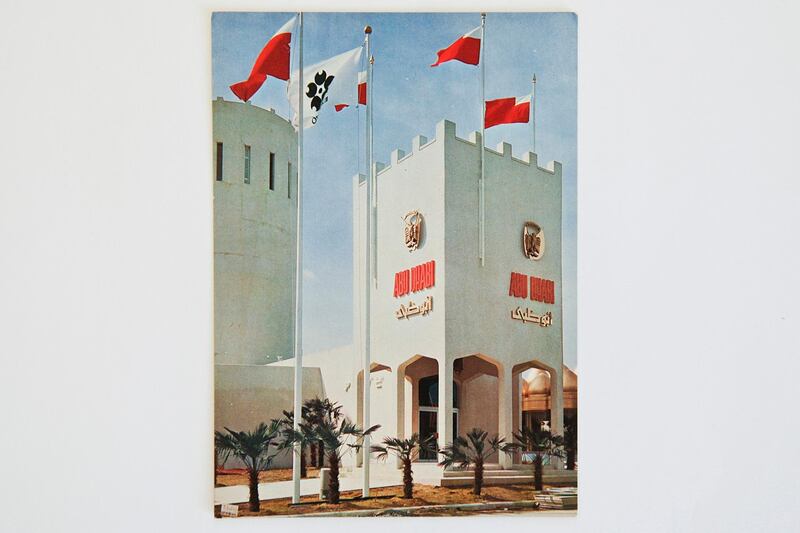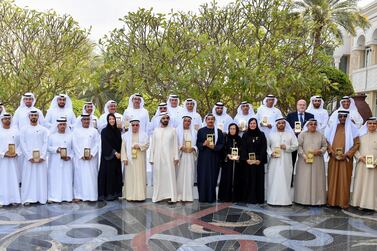It was 50 years ago this month when the world got its first view of a country so new it had not even been born.
The Abu Dhabi pavilion at Expo 70 in Osaka, Japan opened to the public more than a year and half before the formation of the UAE in December 1971.
Its presence was a symbol of confidence in the future, a sign from Sheikh Zayed that the country he was building was ready to join the community of nations.
Complex and sometimes challenging negotiations would lie ahead before the UAE flag was raised by Sheikh Zayed and Sheikh Rashid over Union House in Dubai, but Expo 70 showed there was no turning back.
World Fairs, as they were first called, began in Victorian Britain in 1851 with the Great Exhibition in London’s Hyde Park.
They were made possible by the advances of the Industrial Revolution, the railways and the steamships that were fast shrinking the globe.
They showed ordinary people the wonders of progress but also brought tantalising contact with peoples and cultures that previously had only been glimpsed on the pages of books or magazines.
They were also an exercise in soft power, a chance for national pride on an international stage.
Since 1970, the UAE has taken part seven Expos. Half a century later, it is the turn of Dubai Expo 2020 in October. The UAE are the hosts in times are every bit as challenging as 50 years ago, arguably even more so.
Dubai Expo 2020 is a chance again to become a symbol of confidence in the future, this time not just for the UAE, but for the entire world,
Osaka Expo 70
Osaka 1970 was the first time an Expo had been hosted by Japan, and Abu Dhabi’s ties with Japanese energy companies led to the suggestion that the Emirate took part.
The pavilion was designed by Abdulrahman Makhlouf, an Egyptian city planner responsible for much of the layout of Abu Dhabi.
For Osaka, he choice to build a replica of an Al Ain fort, which provided particularly popular with visitors.
In its review of Expo 70. the magazine Aramco World noted "The square crenellated parapets and tall cylindrical towers so common to old Arabian Gulf mud brick forts.
“Inside are two central exhibits, one a carpeted Arab room, the other a handsome display of brass lanterns hanging from the inside of the cylindrical tower and splashed with iridescent patches of soft colour pouring through stained glass apertures at the top.”
Among those from Abu Dhabi who made the long journey to Japan was Rashid Abdullah Al Nuaimi, whose job included selling cups of gahwa to visitors.
As he explained in an interview with The National in 2014, construction and other costs had exhausted their budget of 60,000 Bahraini dinar, the currency in use at the time and equal to around Dh1.5 million today.
“We finished all our money, but I took some coffee pots with me to Japan and started selling coffee for a dollar each to make some money. People started to come and buy our ‘Arabic coffee’. Gradually, delegations started to come and were encouraged to support us,’ he said.
“Sheikh Zayed’s dreams and ambitions were, to be honest, even bigger than Expo and he has achieved far more than Expo.”
Seville Expo 1992
It would be over 20 years before another World Expo was held, this time in Seville, Spain as a commemoration of the 500th anniversary of the first voyage of Christopher Columbus to the New World.
More than 100 countries were represented, including, for the first time, the United Arab Emirates.
The UAE pavilion’s design was again a fort, but this time a spectacular replica of Al Jahili Fort in Al Ain. The display included replicas of bronze age tombs and artefacts curated by the archeologist Walid Yassin Al Tikriti. Other sections of the pavilion were devoted to the oil and energy industry.
Expo 92 saw 12 Arab countries take part, from Oman’s “heritage dome” to a replica of the Siq – the entrance to the ancient city of Petra – created by Jordan.
After the Expo closed in October, the site was converted to a park, where several of the pavilions still stand, including Morocco and Kuwait, but sadly not the UAE.
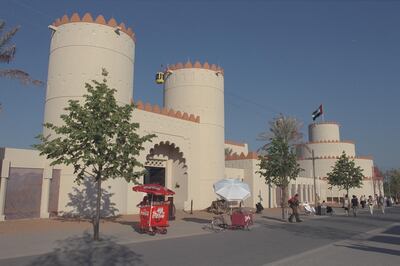
Hanover Expo 2000
Lasting five months, Expo 2000 was held on the Hanover Fairground, the largest exhibition space in the world and with Germany hosting for the first time.
For the third time, the UAE chose a fort for its pavilion, designed by the French architect Alain Durand-Heriot, and again drawing from Al Jahili Fort.
The theme was “from the traditional to the modern” emphasising the country’s commitment to protect natural resources and towards a more diversified economy.
At 3000 square meters, it was one of the largest pavilions, and included a cinema with a 360° screen and incorporating recyclable materials.
Desert sand was imported, along with 60 palm trees.
Al Shindagah magazine reported "The visitor enters the fort through a gateway flanked by two 18 metre high towers and is at once immersed in a scene from Gulf life. Arab craftsmen in dishdasha go about their tasks in the souq, young Arab women dance on a stage to folk music performed by UAE nationals."
The magazine also said “The pavilion has gone down well. The City of Hanover is negotiating to keep the desert fort on the Expo site permanently,” although this did not happen.
Despite the success of the UAE pavilion, Expo 2000 attracted barely half the expected 40 million visitors and was a financial flop, generally attributed to poor marketing and publicity.
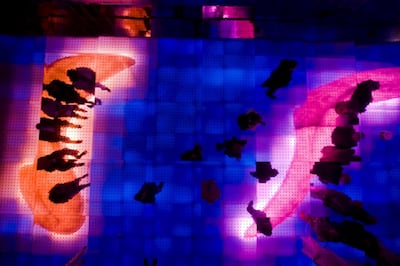
Expo Zaragoza 2008
Expo 2008 took place in the Spanish city of Zaragoza between June and September and was a specialised expo with the theme “Water and Sustainable Development” that opened with a concert by Bob Dylan.
The UAE was one of 104 countries taking part, with the pavilion using light and video to create the impression of a river, and reflecting the importance of water to the country’s life and economy.
It received the gold medal for excellence in design and content quality.
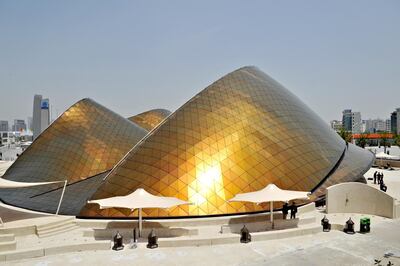
Shanghai Expo 2010
For China’s first World Expo, the UAE moved away from the fort theme in spectacular fashion.
Designed by Foster + Partners, the pavilion was inspired by the sweeping curves of giant sand dunes, the surface polished to shine gold in the sun and with the roof rising to 20 meters.
Echoing the Expo theme of “Better City – Better Life”, the UAE pavilion highlighted the country's growing focus on sustainability, in particular the Masdar City project in Abu Dhabi. It also featured Emirati artists and crafts.
The pavilion was voted most popular by one Shanghai magazine, with reports that people were queuing for up to four hours to see inside.
The Expo attracted around 73 million visitors, including a record 1.03 million on a single day.
This time, the pavilion returned home after the end of the Expo in October 2010.
It was dismantled, shipped back to Abu Dhabi and rebuilt on Saadiyat Island as part of the cultural district in 2011.
Briefly used for Art Abu Dhabi, the pavilion has now been repurposed as the UAE campus for the American Berklee College of Music.
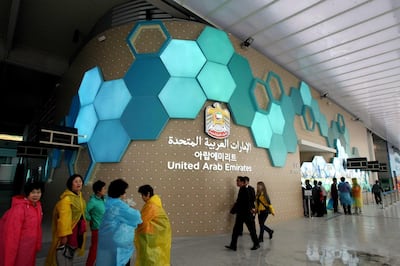
South Korea Expo 2012
Taking place just two years after Shanghai, Expo 2012 was what is known as a “specialised expo” with the theme “The Living Ocean and Coast” and located in coastal city of Yeosu.
The pavilion featured a dramatic audio visual display, and The Turtle, a short film on the importance of maritime conservation.
Visitors were welcomed by “Reem” a humanoid robot who spoke in Arabic, English and Korean.
The pavilion was awarded the silver medal by the organisers for its “creative display.”
The following year, the Bureau International des Expositions (BIE) awarded the 2020 World Expo to Dubai.
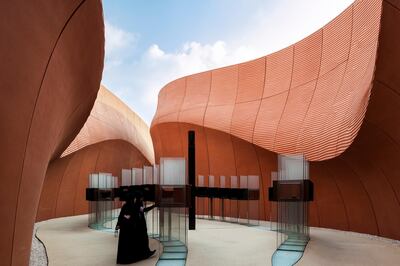
Expo Milano 2015
For its pavilion for Milan's World Expo, the UAE once again turned to Foster+Partners. Again the design drew from the natural world, this time creating narrow shaded concrete walkways screened by walls whose colours and shapes reflected sand-dunes, and were lined with desert plants.
The experience was seen as a test run for Dubai, as well as promoting the country’s culture, including a short film about the date palm and a model of the Mohammed bin Rashid Al Maktoum Solar Park.
Dr Peter Vine, pavilion project director, told The National at the time "We wanted to break the mould of previous expos. What we want is for the visitors to say 'we didn't realise the UAE was like that'."
After the ending of the Expo, the pavilion was dismantled, to be rebuilt in Masdar City.
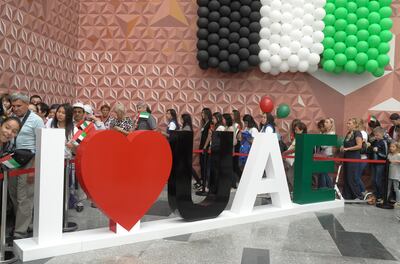
Astana Expo 2017
The 2017 was held in the capital of Kazakhstan, Astana, now renamed Nur Sultan, and with the theme “Future Energy.”
The pavilion was opened by Sheikh Ahmed bin Saeed Al Maktoum, chairman of the Expo 2020 Dubai Higher Committee, who spoke of the “great significance for the UAE as it paves the way to the hosting of Expo 2020 Dubai.”
Young Emirati volunteers played a major role during the four months of the Expo, representing the UAE’s culture and traditions, while displays underline the country’s commitment to diversified energy.
